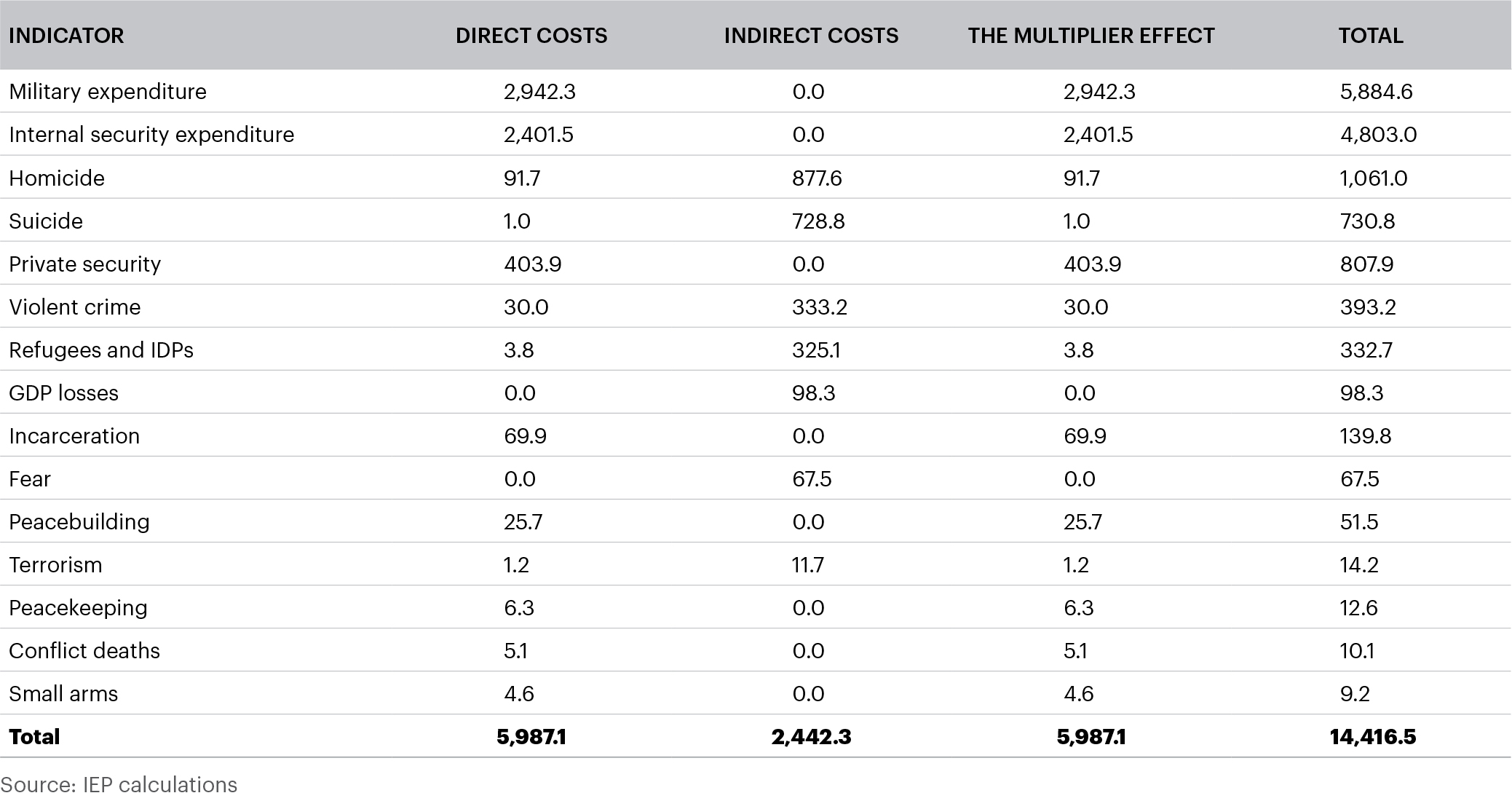The global economic impact of violence is defined as the expenditure and economic effect related to “containing, preventing and dealing with the consequences of violence.” In 2019, the economic impact of violence on the global economy amounted to $14.4 trillion in constant purchasing power parity (PPP) terms. This is equivalent to 10.5 per cent of the global GDP or $1,895 per person. The economic impact of violence improved for the second year in a row in 2019, decreasing by 0.4 per cent or $64 billion from the previous year.
The economic model comprises 18 indicators, many containing multiple components, such as internal security expenditure, which consists of police services, law courts, prisons, and other national public safety expenditures. The total economic impact is broken down into three categories: direct costs, indirect costs, and a multiplier effect. The direct costs associated with violence include the immediate consequences on the victims, perpetrators, and public systems including health, judicial and public safety. The indirect cost of violence refers to longer-term costs such as lost productivity, psychological effects and the impact of violence on the perception of safety and security in society.

The data for internal security spending is obtained from the International Monetary Fund (IMF) government finance statistics database. Expenditure on private security is the fourth largest category in the model and comprises 5.6 per cent of the total. Homicide is the third largest component in the model, at 7.4 per cent. The economic impact of homicide decreased by 0.2 per cent in 2019 and was predominantly driven by improvements in many national homicide rates.
Russia and the United States both had significant reductions, recording a $14.2 and $12.6 billion decline in their cost of homicide from 2018, respectively. However, the improvements in many of the countries were offset by the deterioration in Mexico’s impact of homicide, which increased by $25.8 billion — the largest increase of any country. The model also includes suicide, classified by the World Health Organisation as self-inflicted violence resulting in death. The economic impact of suicide amounted to $730.8 billion in 2019 and represented 5.1 per cent of the global total. The economic impact of suicide is higher than that of all of the armed conflict indicators combined. The impact of Armed Conflict consists of five categories:
In 2019, the five categories of Armed Conflict listed above collectively decreased by 11.7 per cent or $68.6 billion from 2018. In absolute monetary terms, this was the largest decrease and was the result of all five categories improving from 2018. The impact of terrorism recorded the largest percentage improvement, falling by 52.8 per cent or $15.9 billion.
Decreasing by $12.9 billion, Iraq had the largest decrease. GDP losses from conflict and the economic impact of conflict deaths, decreased by 21.1 per cent and 38 per cent, respectively. The economic impact from refugees and IDPs also recorded a decline falling by 2.8 per cent from 2018, the equivalent of $9.4 billion. The economic impact of violent crime improved in 2019 marked by a 4.3 per cent decrease, the equivalent of $17.8 billion. Violent crime, consisting of violent assault and sexual assault, is 2.7 per cent of the total impact. India and Brazil had the largest increases in absolute monetary terms, whereas the UK, France and Germany had the largest decreases. Overall in 2019, 39 countries had a higher impact from violent crime while 123 countries improved.